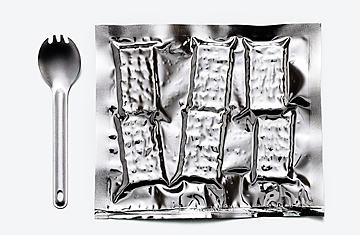
In his basement office at the University of Wisconsin, Rich Hartel lines up the failures. The 10-year-old jar of marshmallow crme in which the corn syrup settled into a thick amber pool at the bottom. The two-year-old petrified Peeps. "I have some one-year-old Twinkies at the back of my cabinet," offers Hartel, a professor of food science. Contrary to popular belief that they're immortal, Twinkies are designed for no more than a four-week shelf life, and they tend to become more chewy than soft after the first week. The fact is that most desserts--barring, famously (or infamously), fruitcake--devolve into a sticky wad of starch in a depressingly short time.
At least for now. Scientists like Hartel are working to change that, with some startling recent success. A new generation of food-preservation technologies is starting to transform how long we can keep food tasting fresh, exponentially increasing its life span. NASA recently reported that it has come up with bread pudding that can last a solid four years. Over at the Pentagon, there's pound cake that stays springy for up to five years. And that's just the desserts. Long-lasting entres and side dishes are being concocted, with enormous implications: in the future we may have to go to the grocery store only once a month and will rarely, if ever, need to throw out food because it has gone bad. Further, if fruits and vegetables can be better preserved, food scientists hope they will become less expensive and more available for people on limited budgets.
Consumers are already taking advantage. Tuna in those vacuum-sealed pouches that started popping up in stores a few years ago tastes fresher than canned tuna and has a similar shelf life, about 2 years. Foodmakers had conquered one part of the equation. Spam is famously imperishable--but palate-wise, it's practically in a category of its own and not a likely standard bearer for fresh-tasting, everyday meals. Though Spam is sold with an expiration date two years in the future, Phil Minerich, vice president of research at Hormel, says that actually underestimates its durability. "We really put that on there to help the consumer move it through," he says. "We don't want it to be sitting on the shelf for 12, 15 years." But, he adds, a well-sealed can of Spam would remain edible that long, if not longer.
The new food preservationists aren't just after longevity; they're reaching for a different standard of edibility. "In the last decade, there's been an evolution in the way we think of long-lasting foods," says Lauren Oleksyk, leader of the food-processing, engineering and technology team at the U.S. Department of Defense Combat Feeding Directorate.
Much of the new technology stems from the military's need for long-lasting food for troops, packaged as MREs (meals, ready to eat)--rations that have never been famous for tasting good. In 2002, Oleksyk and her colleagues introduced their first alternative option, an "indestructible" sandwich: a bread envelope stuffed with pepperoni or barbecued chicken, designed to last three to five years without refrigeration at standard room temperature.
